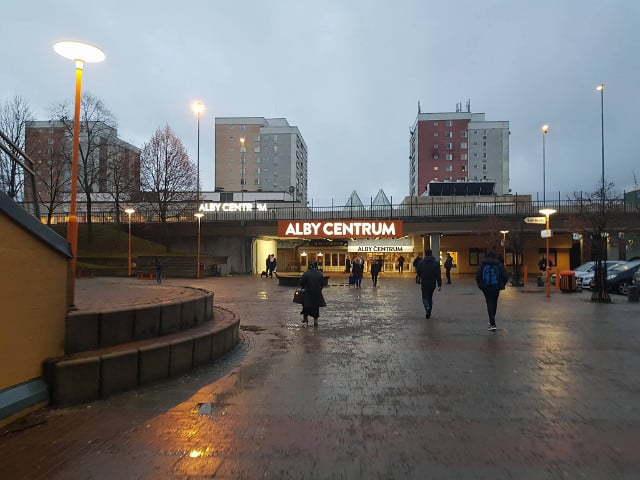Statistics related to the suburbs were presented as part of Järva Politics Week in Stockholm at the weekend, an annual event designed to increase political engagement in the parts of the capital where there is a strong immigrant presence.
Swedish police first released a report on what they call “vulnerable areas” in 2015, defined as socioeconomically vulnerable neighbourhoods where crime and poverty rates are high, and police have to adapt methods and equipment to volatile situations. The propensity to report crime is also lower than in general and there is often a disconnect between residents and wider society.
A report from earlier this year suggested that two fifths of residents in the areas feel unsafe while outdoors at night.
READ ALSO: New reports shines light on safety concerns in vulnerable suburbs
But despite the many problems in the areas, there are several positive long-term trends that can be observed, with more jobs created, higher incomes and a lower uptake of social security in the last 20 years.
In Stockholm suburb Rinkeby, for example, the number of people in permanent work has increased from 29 percent to 49 percent since 2015. Registered unemployment has dropped from 18 to 15 percent since 1997 meanwhile (dropping even further to eight percent before the financial crisis hit in 2008).
The number of people who are neither working nor studying has also fallen in the areas, including for those born outside of Sweden. Incomes have generally increased and the uptake of social security has decreased in turn.

Alby in Stockholm. Photo: Lee Roden/The Local
The head of the Institute for Evaluation of Labour Market and Education (IFAU) urged caution when assessing the trends however.
“Overall there are a lot of positive trends here. But it can be an improvement from a very poor situation,” Olof Åslund from the IFAU noted.
Measuring developments in the areas is difficult, he explained, because the makeup of those areas is in constant change:
“And if you really look at it, the effects of living in a vulnerable area are of less importance than the background of your parents in terms of education and financial situation.”
Future progress in the areas will in many ways be decided by educational developments, and SCB’s statistics show some cause for optimism there. The number of youngsters progressing to upper secondary school (gymnasiet) has increased, growing from 65 percent to 69 percent in Rinkeby between 2007 and 2016 for example.
IN DEPTH: Working on the front line in Stockholm's vulnerable suburbs
Police officers working in some of Stockholm’s vulnerable suburbs want more resources to help further battle crime in the areas, telling The Local in November that pushing criminals out of town centres and bringing local businesses back will be key to improving the situation in the long-term.


 Please whitelist us to continue reading.
Please whitelist us to continue reading.
Member comments